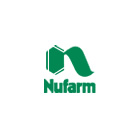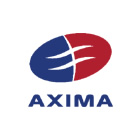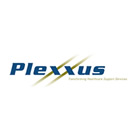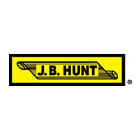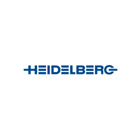
Virtual Disks: Backup with VHD/VHDX in SyncBackPro
Author: Michael J. Leaver (2BrightSparks Pte. Ltd.)
Virtualization has transformed how we deal with resources in computing with record flexibility and efficiency. And at the forefront of this revolution is the virtual disk, a hard disk emulation in a virtualized environment. One of the most popular formats in this area is Virtual Hard Disk (VHD) and Hyper-V Virtual Hard Disk (VHDX), both developed by Microsoft.
History
Virtual disk development started with the VHD format, which was initially brought in by Connectix for their Virtual PC product that was later acquired by Microsoft in 2003. Created to virtualize a physical hard disk, VHD became the foundation of Microsoft's virtualization platforms, such as Virtual PC, Virtual Server, and most prominently, Hyper-V. As there were improvements in the virtualization technology, there was a need for a more advanced and robust format, and thus VHDX was born with Windows Server 2012. The new format was developed to surpass the limitations of its earlier version and also to cater to the needs of modern computing environments.
Virtual Machines
VHD and VHDX files are the storage foundation of virtual machines (VMs), containing operating systems, applications, and data. They are the cornerstone of use cases ranging from development and testing to disaster recovery and cloud computing. By encapsulating the entire system within a file, these virtual disks enable easy migration, replication, and backup of virtual environments.
Consider a huge empty room where you can separate it into small rooms with the help of partitions. Each small room can be used individually, and you can do different activities in each of the rooms separately without bothering other people. Virtual machines (VMs) in the virtual world work on the same principle.
A virtual machine is a computer within a computer. It's a software-generated environment that acts like a separate computer, with its own "virtual" hard disk, memory, and processor resources. It allows you to install multiple operating systems on a single physical computer as though each operating system were installed on a separate standalone computer.
For instance, you might have a Windows operating system on one virtual machine and a Linux operating system on another, both on the same physical machine. This technology is particularly convenient for testing new software in a sandbox environment, running old programs that require a specific operating system, or grouping multiple servers to save on hardware costs. Virtual machines provide a versatile, cost-effective way to maximize the use of computing resources you have.
Specifications and Limitations
This shift from VHD to VHDX was not incremental but a jump to a new generation of virtual disk technology that targeted fundamental specifications and overcame limitations that had held back the potential of virtual machines until now.
Debuted during the early days of virtualization, the VHD format created the foundation for virtual disks by containing entire operating systems, applications, and data in a single file. Its structure supported fixed and dynamically expanding types, wherein the latter would increase to any size that had to be supported, with a size cap of 2 terabytes (TB). This size, although large when VHD was conceived, became a constraint as years went by and data-intensive programs and large systems became the norm. In spite of its trailblazing state, the broader support of the VHD format on earlier virtualization systems also forecasted its being surpassed by an improved format.
Understanding the changing demands of contemporary computing infrastructures, Microsoft launched the VHDX format with an explicit mission: to shatter the limitations left behind by its predecessor. VHDX brought a huge boost in capacity, with the ability to handle virtual disks of sizes up to 64 terabytes (TB), thereby meeting the requirements of data-intensive services and applications. Apart from size, VHDX brought in features related to reliability and performance. VHDX introduced data protection features to prevent corruption due to sudden power loss, using a new log structure to safeguard updates. This structure was deliberately designed for efficiency, being compatible with large sector disks to allow for optimal performance. Furthermore, VHDX excelled by including support for large block sizes on dynamic and differential disks, a move that made storage more efficient for various data patterns. It also included the ability to store user-defined metadata in the disk file, making it possible for a more fine-grained and personalized virtual disk experience.
Backup
VHD and VHDX files make the backup procedure a lot easier because they enable backing up VMs as one single unit. This is part of the foundation of such methods as:
- Snapshotting: Saving the state of a VM at a specific moment, enabling quick restoration.
- Incremental Backups: Backing up the changes since the previous backup, reducing storage requirements and backup time.
- Disaster Recovery: Having the ability to rapidly restore VMs on different hardware or in a cloud infrastructure, with minimal downtime.
The decision to use VHD or VHDX in backup environments generally will depend on the specific needs of the environment, including compatibility with backup software and the ability to support large capacity disks.
SyncBackPro is able to backup your files directly to a virtual disk (VHD or VHDX). What this does is allow you to select a virtual disk as the destination for your backups rather than backing up to a physical hard drive or external storage device. This comes in handy when you want to consolidate backups in a virtualized environment or when storage resources are lacking in the physical environment. Backing up to a virtual disk allows users to be able to keep their backups in one file with ease, making it easy to manage storage.
Virtual disks can be kept on any storage media or in the cloud, making it a flexible offsite storage option. SyncBackPro has the ability to synchronize or back up data to a VHD/VHDX file and then keep the file offsite. It is a further protection for data since it ensures that there will be an offsite copy of the data in case of local hardware failure, theft, or natural disasters.
One benefit of virtual disks is that they can be mounted as physical disks. SyncBackPro can take advantage of this by using direct I/O to mounted virtual disks for backup and restore. It offers support for including virtual disks in your backup with read from and write to virtual disks directly as if they were present on the machine physically.
In disaster recovery scenarios, it is extremely beneficial to retain backups in VHD/VHDX format. Virtual disks can be mounted to a virtual machine host, such as Microsoft Hyper-V, quite easily, allowing quick restoration of the backed-up environment. This can be utilized for significantly reducing downtime as well as ensuring business continuity by enabling quick recovery of critical systems and data.
Backing up to virtual disks using SyncBackPro provides your backups with an extra layer of portability. Both VHD and VHDX files are readily movable between hosts, storage media, or cloud infrastructures, providing flexibility in where and how you would want to store and recover your backups.
In conclusion, SyncBackPro virtual disk support provides many opportunities for fast, secure, and versatile backup and disaster recovery options. Whether for personal use or in a corporate setting, backing up to virtual disks can be of immense benefit in administration, scalability, and fault tolerance.
Conclusion
The advent of virtual disks, VHD and VHDX, has been revolutionary in the virtualization market, bringing flexibility, performance, and power in the management of virtual environments. While VHD created the foundation, VHDX built upon it and broadened the landscape with new features, making it the de facto standard for current applications today. Within the backups, these formats provide efficient, stable solutions for backing up virtual machines, highlighting the central role of virtual disks in today's computing environments. As virtualization technology continues to develop, the importance of these formats for maintaining data integrity and system availability continues to be of paramount significance.
Noted Customers
© 2003-2025 2BrightSparks Pte. Ltd. | Home | Support | Privacy | Terms | Affiliate Program





